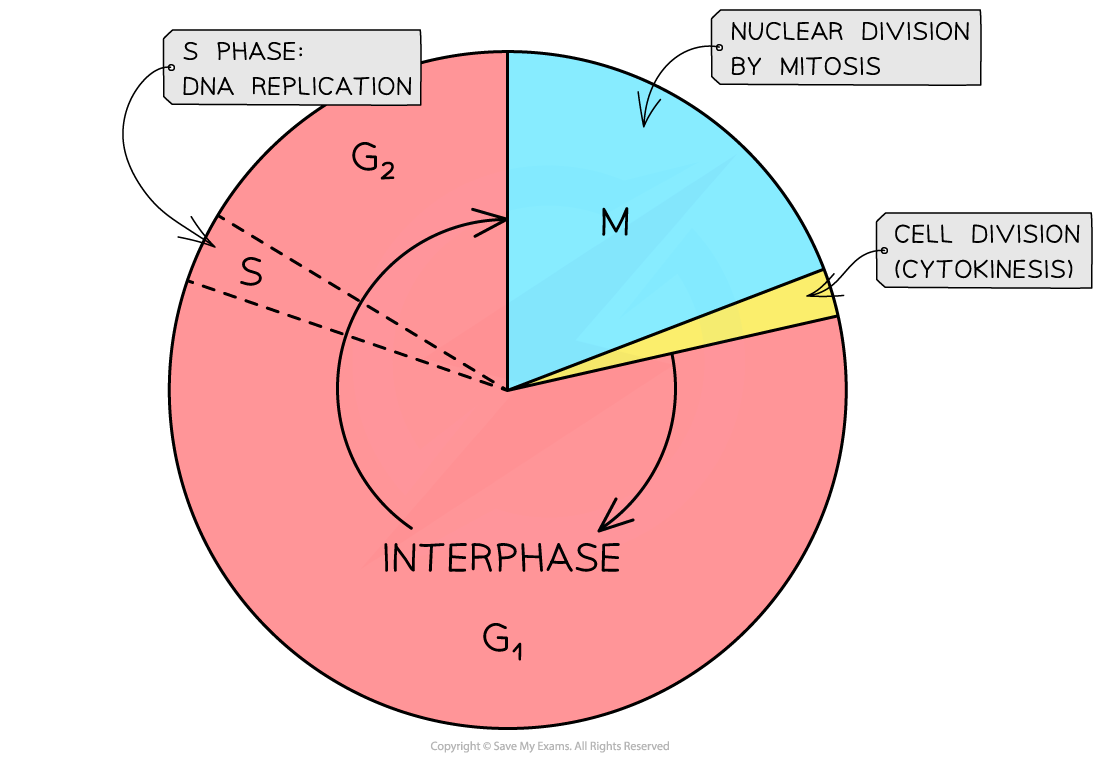- 翰林提供学术活动、国际课程、科研项目一站式留学背景提升服务!
- 400 888 0080
AQA A Level Biology复习笔记2.3.1 Interphase
Interphase
- Within multicellular organisms, not all cells retain the ability to divide
- Eukaryotic cells that do retain the ability to divide show a cell cycle
- Mitosis is part of a precisely controlled process known as the cell cycle
- The cell cycle is the regulated sequence of events that occurs between one cell division and the next
- The cell cycle has three phases:
- interphase
- nuclear division (mitosis)
- cell division (cytokinesis)
- The length of the cell cycle is very variable depending on environmental conditions, the cell type and the organism
- For example, onion root tip cells divide once every 20 hours (roughly) but human intestine epithelial cells divide once every 10 hours (roughly)
- The movement from one phase to another is triggered by chemical signals called cyclins

The cell cycle. S = synthesis (of DNA); G = gap; M = mitosis
Interphase
- During Interphase the cell increases in mass and size and carries out its normal cellular functions (eg. synthesising proteins and replicating its DNA ready for mitosis)
- Interphase consists of three phases:
- G1 phase
- S phase
- G2 phase
- It is at some point during the G1 phase a signal is received telling the cell to divide again
- The DNA in the nucleus replicates (resulting in each chromosome consisting of two identical sister chromatids)
- This phase of the interphase stage of the cell cycle is called the S phase – S stands for synthesis (of DNA)
- The S phase is relatively short
- The gap between the previous cell division and the S phase is called the G1 phase – G stands for gap
- Cells make the RNA, enzymes and other proteins required for growth during the G1 phase
- Between the S phase and next cell division event the G2 phase occurs
- During the G2 phase, the cell continues to grow and the new DNA that has been synthesised is checked and any errors are usually repaired
- Other preparations for cell division are made (eg. production of tubulin protein, which is used to make microtubules for the mitotic spindle)
- Interphase = G1 + S + G2
Nuclear division (mitosis)
- Follows interphase
- Referred to as the M phase – M stands for mitosis
- Cell growth stops during the M phase
Cytokinesis
- Follows M phase
- Once the nucleus has divided into two genetically identical nuclei, the whole cell divides and one nucleus moves into each cell to create two genetically identical daughter cells
- In animal cells, cytokinesis involves constriction of the cytoplasm between the two nuclei and in plant cells a new cell wall is formed
转载自savemyexams

早鸟钜惠!翰林2025暑期班课上线

最新发布
© 2025. All Rights Reserved. 沪ICP备2023009024号-1








